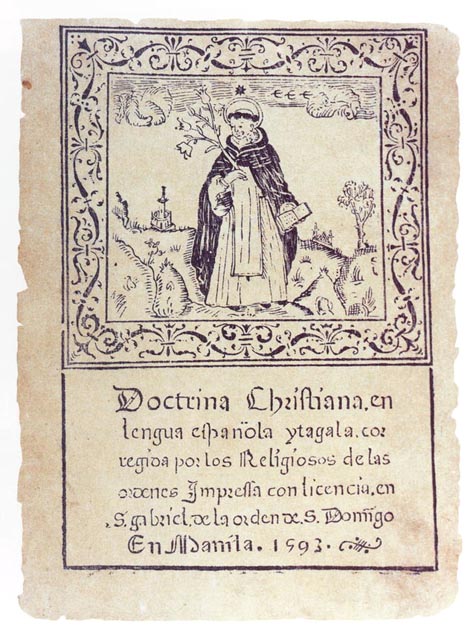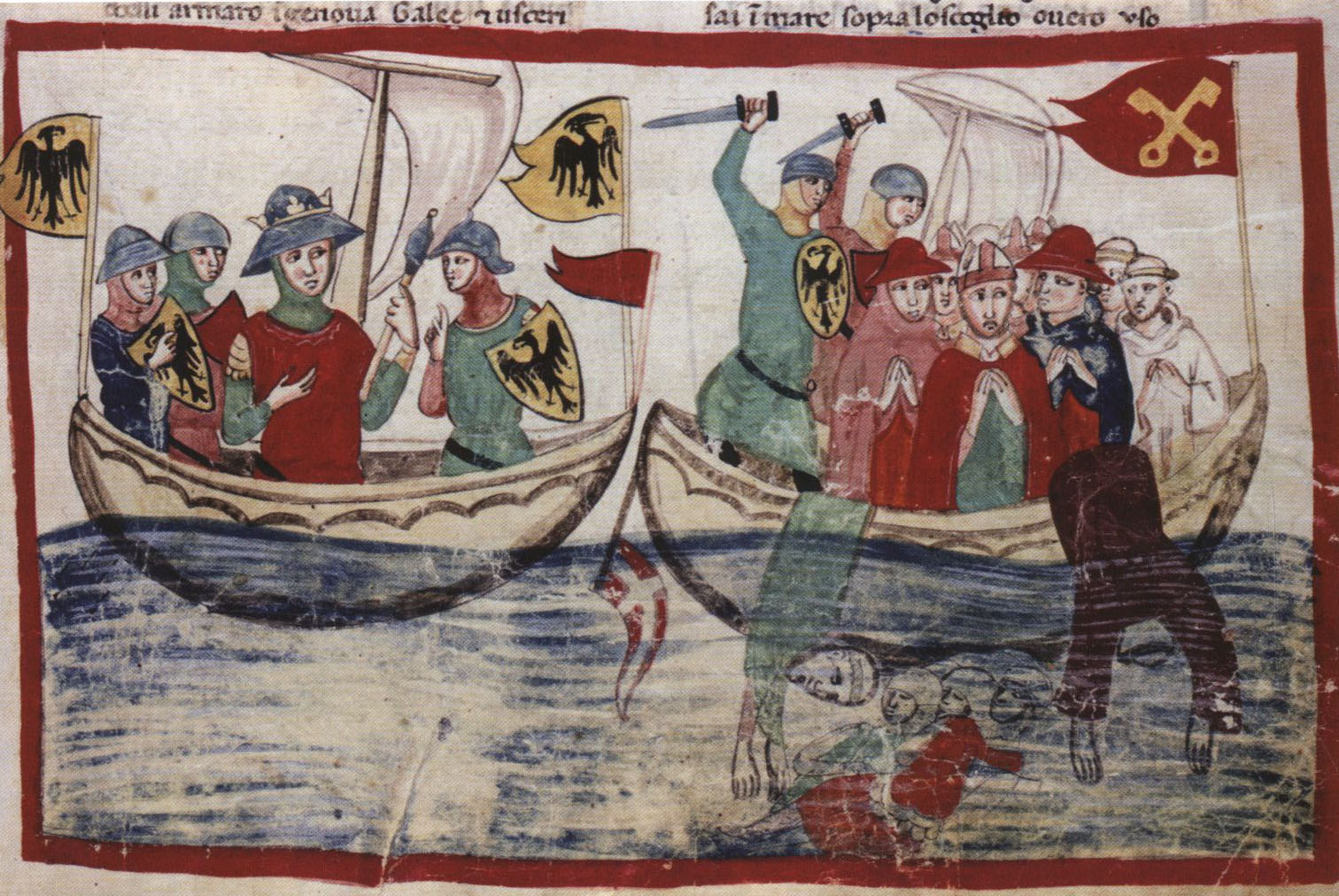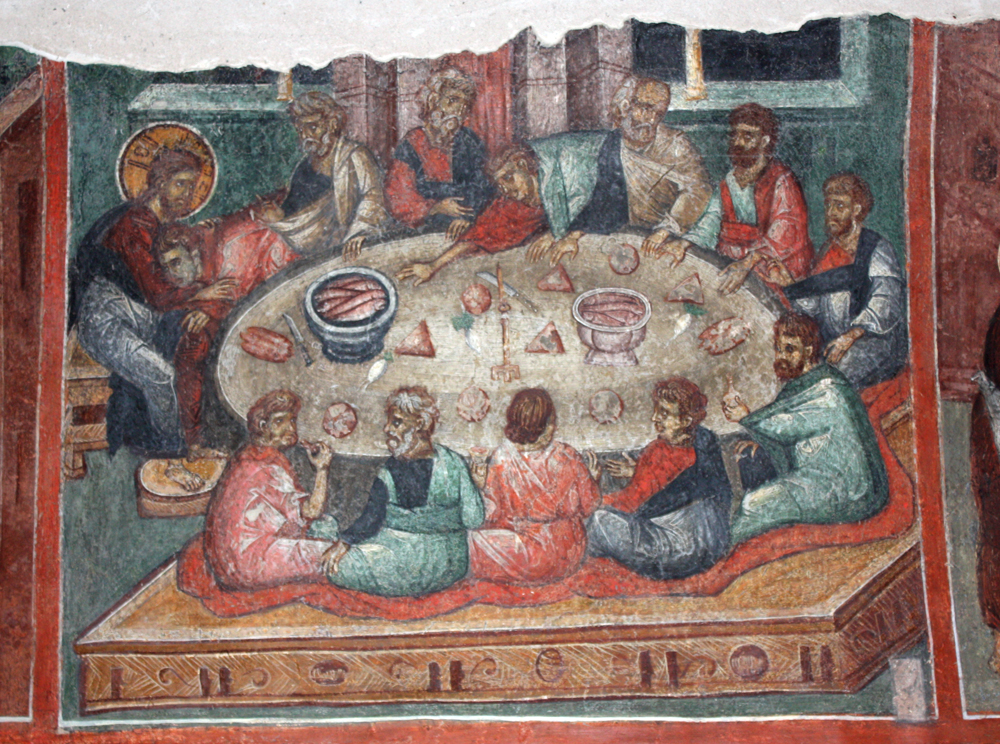|
Stedinger Crusade
The Stedinger Crusade (1233–1234) was a Papally sanctioned war against the rebellious peasants of Stedingen. The Stedinger were free farmers and subjects of the Prince-Archbishopric of Bremen. Grievances over taxes and property rights turned into full-scale revolt. When an attempt by the secular authorities to put down the revolt ended in defeat, the archbishop mobilized his church and the Papacy to have a crusade sanctioned against the rebels. In the first campaign, the small crusading army was defeated. In a follow-up campaign the next year, a much larger crusader army was victorious. It is often grouped with the Drenther Crusade (1228–1232) and the Bosnian Crusade (1235–1241), other small-scale crusades against European Christians deemed heretical.Megan Cassidy-Welch (2013)"The Stedinger Crusade: War, Remembrance, and Absence in Thirteenth-Century Germany" ''Viator'' 44 (2): 159–174. Background Stedinger settlement The Stedinger were the peasant inhabitants of the re ... [...More Info...] [...Related Items...] OR: [Wikipedia] [Google] [Baidu] |
Castle
A castle is a type of fortification, fortified structure built during the Middle Ages predominantly by the nobility or royalty and by Military order (monastic society), military orders. Scholars usually consider a ''castle'' to be the private fortified house, fortified residence of a lord or noble. This is distinct from a mansion, palace, and villa, whose main purpose was exclusively for ''pleasance'' and are not primarily fortresses but may be fortified. Use of the term has varied over time and, sometimes, has also been applied to structures such as hill forts and 19th- and 20th-century homes built to resemble castles. Over the Middle Ages, when genuine castles were built, they took on a great many forms with many different features, although some, such as curtain wall (fortification), curtain walls, arrowslits, and portcullises, were commonplace. European-style castles originated in the 9th and 10th centuries after the fall of the Carolingian Empire, which resulted ... [...More Info...] [...Related Items...] OR: [Wikipedia] [Google] [Baidu] |
Gregory IX
Pope Gregory IX (; born Ugolino di Conti; 1145 – 22 August 1241) was head of the Catholic Church and the ruler of the Papal States from 19 March 1227 until his death in 1241. He is known for issuing the '' Decretales'' and instituting the Papal Inquisition, in response to the failures of the episcopal inquisitions established during the time of Pope Lucius III, by means of the papal bull '' Ad abolendam'', issued in 1184. He worked initially as a cardinal, and after becoming the successor of Honorius III, he fully inherited the traditions of Gregory VII and of his own cousin Innocent III, and zealously continued their policy of papal supremacy. Early life and education Ugolino (Hugh) was born in Anagni near Rome. The date of his birth varies in sources between and 1170. He is said to have been "in his nineties, if not nearly one hundred years old" at his death. He received his education at the Universities of Paris and Bologna. He was created Cardinal-Deacon of t ... [...More Info...] [...Related Items...] OR: [Wikipedia] [Google] [Baidu] |
Bishopric Of Riga
The Archbishopric of Riga (, ) was a Catholic diocese and civil government in Medieval Livonia, subject to the Holy See. It was established in 1186 and ended in 1561. History The diocese was established in 1186 as the Bishopric of Livonia at Ikšķile; after its seat was moved to Riga, it became the Bishopric of Riga in 1202 and was elevated to an archbishopric in 1255. The archbishops of Riga were also the secular rulers of Riga until 1561 when during the Reformation the territory converted from Catholicism to Lutheranism and all church territories were secularized. The see was restored as a diocese of the Catholic Church in 1918 and raised into an archdiocese in 1923. Bishops and Archbishops of Riga A new Bishopric of Livonia was established in Latgalia in 1621 during the Inflanty Voivodeship of the Polish–Lithuanian Commonwealth. Coinage The Archbishops of Riga were innovators in the field of minting currency, reviving techniques abandoned since the co ... [...More Info...] [...Related Items...] OR: [Wikipedia] [Google] [Baidu] |
Dominican Order
The Order of Preachers (, abbreviated OP), commonly known as the Dominican Order, is a Catholic Church, Catholic mendicant order of pontifical right that was founded in France by a Castilians, Castilian priest named Saint Dominic, Dominic de Guzmán. It was approved by Pope Honorius III via the papal bull on 22 December 1216. Members of the order, who are referred to as Dominicans, generally display the letters ''OP'' after their names, standing for , meaning 'of the Order of Preachers'. Membership in the order includes friars, nuns, Religious sister (Catholic), active sisters, and Laity, lay or secular Dominicans (formerly known as Third Order of Saint Dominic, tertiaries). More recently, there have been a growing number of associates of the religious sisters who are unrelated to the tertiaries. Founded to preach the The gospel, gospel and to oppose heresy, the teaching activity of the order and its scholastic organisation placed it at the forefront of the intellectual life of ... [...More Info...] [...Related Items...] OR: [Wikipedia] [Google] [Baidu] |
Otto Of San Nicola In Carcere
Otto of Tonengo (c. 1190 – 1250/1251) was an Italian papal diplomat and cardinal, first as deacon of San Nicola in Carcere from 1227 and then as bishop of Porto e Santa Rufina from 1244. He is called in many English sources Otto Candidus, meaning "Otto the White", a name he used himself.S. D. Church, ''King John: New Interpretations'' (2003), p. 314; Toby Huitson, ''Stairway to Heaven: The Functions of Medieval Upper Spaces'' (Oxbow Books, 2014)p. 157/ref> Otto had a legal education, and had joined the Roman ''curia'' by 1225. His first mission was to England to raise funds for the Sixth Crusade in 1225–1226. In 1227–1228, he undertook his first embassy to Frederick II, Holy Roman Emperor. In 1229–1231, he travelled extensively through France, the Low Countries, Germany, Denmark and Norway on Papal business. In 1232–1233, he undertook his second embassy to Frederick II. In 1237–1240, he was the apostolic legate in England, Scotland and Ireland. This was by far h ... [...More Info...] [...Related Items...] OR: [Wikipedia] [Google] [Baidu] |
Eucharist
The Eucharist ( ; from , ), also called Holy Communion, the Blessed Sacrament or the Lord's Supper, is a Christianity, Christian Rite (Christianity), rite, considered a sacrament in most churches and an Ordinance (Christianity), ordinance in others. Christians believe that the rite was instituted by Jesus at the Last Supper, the night before Crucifixion of Jesus, his crucifixion, giving his Disciple (Christianity), disciples bread and wine. Passages in the New Testament state that he commanded them to "do this in memory of me" while referring to the bread as "my body" and the cup of wine as "the blood of my covenant, which is poured out for many". According to the synoptic Gospels, this was at a Passover meal. The elements of the Eucharist, sacramental bread, either Leavening agent, leavened or Unleavened bread, unleavened, and sacramental wine (non-alcoholic grape juice in some Protestantism, Protestant traditions, such as Methodism), are consecrated on an altar or a communio ... [...More Info...] [...Related Items...] OR: [Wikipedia] [Google] [Baidu] |
Heretics
Heresy is any belief or theory that is strongly at variance with established beliefs or customs, particularly the accepted beliefs or religious law of a religious organization. A heretic is a proponent of heresy. Heresy in Christianity, Judaism, and Islam has at times been met with censure ranging from excommunication to the death penalty. Heresy is distinct from apostasy, which is the explicit renunciation of one's religion, principles or cause; and from blasphemy, which is an impious utterance or action concerning God or sacred things. Heresiology is the study of heresy. Etymology Derived from Ancient Greek ''haíresis'' (), the English ''heresy'' originally meant "choice" or "thing chosen". However, it came to mean the "party, or school, of a man's choice", and also referred to that process whereby a young person would examine various philosophies to determine how to live. The word ''heresy'' is usually used within a Christian, Jewish, or Islamic context, and implies sl ... [...More Info...] [...Related Items...] OR: [Wikipedia] [Google] [Baidu] |
Wilbrand Of Oldenburg
Wilbrand of Oldenburg (before 1180 - Zwolle, 26 July 1233) was a bishop of Paderborn and of Utrecht. Family Wilbrand was the son of Henry II, Count of Oldenburg-Wildeshausen, and Beatrix of Hallermund, daughter of Wilbrand I, Count of Loccum-Hallermund. His uncle Gerhard of Oldenburg was bishop of Osnabrück from 1192 to 1216 and archbishop of Bremen from 1216 to 1219. Wilbrand was also related to the count of Holland and Guelders. Wilbrand's older brothers Burchard of Wildenbrug and Henry III, Count of Oldenburg were killed in a crusade against the Stedingers. His other brother Engelmar was provost at Munster. Life From 1211 to 1212 Wilbrand was Canon of Hildesheim, where he was ordered by Otto IV, Holy Roman Emperor to prepare the Fifth Crusade to the Holy Land. He travelled throughout the region and reported about this in his ''Itinerary of the Holy Land'' (), an important historical source on the crusades and crusader castles. He was supported in this task by the grand ... [...More Info...] [...Related Items...] OR: [Wikipedia] [Google] [Baidu] |
Lilienthal, Lower Saxony
Lilienthal is a municipality in the administrative district of Osterholz, Lower Saxony, Germany. It borders Bremen ( Free Hanseatic City of Bremen). History Lilienthal belonged to the Prince-Archbishopric of Bremen. Lilienthal monastery The history of the small town (without Town privileges) of Lilienthal goes back to its founding as a nunnery by the prince-archbishop Gerhard II. In 1232 construction was begun on a convent of the Order of the Cistercians under the name of ''Vallis Liliorum'' (), and the finished building was sanctified in 1264. During the 15th century, the cloister enjoyed a time of prosperity. After the Reformation and the conversion of the Cistercian nuns, it became a Lutheran Women's Convent, and until the end of the Thirty Years' War in 1648 it remained in deplorable conditions. In 1650, the city went through secularization. The land once belonging to the convent, which had become fragmented, developed into the small town of Lilienthal. Sweden an ... [...More Info...] [...Related Items...] OR: [Wikipedia] [Google] [Baidu] |
Cistercian Nuns
Cistercian nuns are female members of the Cistercian Order, a religious order of the Catholic Church. History The Cistercian Order was initially a male order. Cistercian female monasteries began to appear by 1125. The first Cistercian monastery for women, Le Tart Abbey, was established at Tart-l'Abbaye in the Diocese of Langres (now Dijon) in 1125, by nuns from the Benedictine monastery of Juilly, and with the cooperation of Stephen Harding, abbot of Cîteaux. At Juilly, a dependency of Molesme Abbey, Humbeline, the sister of Saint Bernard of Clairvaux, lived and died.Herbermann, Charles, ed. (1913). " Cistercian Sisters". ''Catholic Encyclopedia''. New York: Robert Appleton Company. The Cistercian nuns of Le Tart founded daughter houses in Europe, including at Ferraque (1140) in the Diocese of Noyon, Blandecques (1153) in the Diocese of St-Omer, and Montreuil-les-Dames (1164) near Laon. Charity work was central to the activities of the Cistercian nunneries, and some ... [...More Info...] [...Related Items...] OR: [Wikipedia] [Google] [Baidu] |
Herman II, Lord Of Lippe
Herman II, Lord of Lippe (1175 – 25 December 1229) was a ruling Lord of Lippe. Life Herman II was born in Lippe (now called Lippstadt), the eldest son of Lord Bernhard II and his wife, Heilwig, a daughter of Count Otto I Heilwig of Are-Hostaden. He was co-regent with his father, and succeeded him in 1196 as ruler of the House of Lippe. He was less belligerent than his father and brother, and often tried to act as intermediary when his neighbours had a dispute. In the dispute over the German throne in 1198, Herman supported the Guelph side. He switched sides to support Emperor Frederick II in 1214. In 1217 or 1218, Herman became administrator in Utrecht, representing his brother Otto II, who was Bishop of Utrecht. He promoted the cities and gained the post of Vogt of the Monasteries Clarholz and Herzebrock. His main opponent during this period was Engelbert II of Berg, who was Archbishop of Cologne. Earlier in his career, Herman had supported Engelbert. In 1227, ... [...More Info...] [...Related Items...] OR: [Wikipedia] [Google] [Baidu] |





